Accepted Scientific Name: Eriosyce villosa (Monv.) Katt.
Eriosyce (Cactac.) gen. revis. & ampl. (Succ. Pl. Res., 1) 119 (1994)
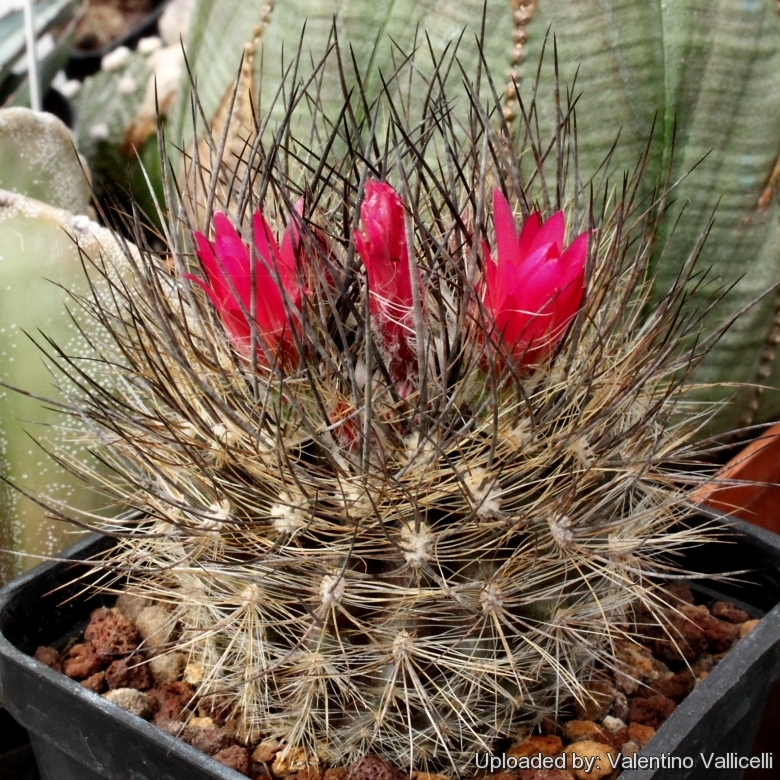
Bridgesia villosa (Eriosyce villosa) Photo by: Valentino Vallicelli
It is a very heavy and constant bloomer with outstanding colour, easy grower.
Origin and Habitat: Totoral Bajo to Carrizallilo, Huasco, Coquimbo and Atacama regions, Chile (extent of occurrence about 5,000 km2)
Altitude: It grows at elevations of 0 to 800 m asl.
Habitat and Ecology: Eriosyce villosaSN|2370]]SN|3030]] occurs in coastal hills (lomas costeras) on rocky soils. It is frequent and the population stable. The major threats are illegal collection and industrialization to process steel. The coastal formations in this region have vegetation corresponding to the Desierto Costero Huasco (Huasco coastal desert). Due to occasional precipitation, this vegetation has more permanence and continuity than the vegetation occurring farther north. The endemics include Copiapoa echinoidesSN|1318]]SN|1109]], Copiapoa malletianaSN|1109]]SN|1318]], Eriosyce napinaSN|3030]]SN|2370]] and Neoporteria villosa var. lanicepsSN|12572]]SN|12572]]. At times this region is dominated by geophytes, which can cover expanses of the desert spectacularly.
More...Synonyms:
See all synonyms of Eriosyce villosa
back
Accepted name in llifle Database:Eriosyce villosa (Monv.) Katt.Eriosyce (Cactac.) gen. revis. & ampl. (Succ. Pl. Res., 1) 119 (1994)Synonymy: 24
back
Common Names include:
SPANISH (Español): Quisco Peludo
Description: Eriosyce villosaSN|3030]]SN|3030]] is a small solitary cactus typically with long hair-like radial spines and several small magenta flowers at a time. It becomes shortly columnar in age.
Stem: Subglobose to globose, becoming elongated or short cylindrical, greyish-green to very dark green or dark blackish-purple, up to 15 cm tall, 8 cm in diameter.
Roots: Large tuberose tap-root.
Ribs: 13-15 prominent, large, deeply notched between areoles.
Areoles: Large felted.
Spines: More or less dense, the number of spines (especially the bristly radials) is quite variable.
Central spines: 3-4 cm long, bristle like, usually darker than radials, glassy gold-brownish to black.
Radial spines: 12-20, thin, grading from bristle- to hair-like, whitish, grey or brownish.
Flowers: Borne at plant apex on young areoles, 2-2,5 cm in diameter, tubular to narrow funnel-form, bright magenta, showing various shades of purple-pink with clearer throat, pericarpels and floral tubes with long wool and gassy white bristles.
Blooming time: Blooms early in the year. Occasionally forms some buds late in the previous year, and it can sometimes flower during the winter, although the main burst of flowering is in April.
Fruits: Elongate, red, dehiscing by basal pores.
More...Bibliography: Major references and further lectures
1) Faundez, L., Guerrero, P., Saldivia, P. & Walter, H.E. 2013. Eriosyce villosa. In: IUCN 2013. “IUCN Red List of Threatened Species.” Version 2013.2. <www.iucnredlist.org>. Downloaded on 16 January 2014.
2) Fred Kattermann “Eriosyce (Cactaceae): The Genus Revised and Amplified” David Hunt, 1994
3) Edward Anderson “The Cactus family” Timber Press, Incorporated, 2001
4) James Cullen, Sabina G. Knees, H. Suzanne Cubey "The European Garden Flora Flowering Plants: A Manual for the Identification of Plants Cultivated in Europe, Both Out-of-Doors and Under Glass" Cambridge University Press, 11/Aug/2011
5) David R Hunt; Nigel P Taylor; Graham Charles; International Cactaceae Systematics Group. "The New Cactus Lexicon" dh books, 2006
6) Hans Hecht “BLV-Handbuch der Kakteen” BLV-Verlagsgesellschaft, 1982
7) Stephen D. Davis “Centres of Plant Diversity: The Americas” World Wide Fund for Nature (WWF) and ICUN - World Conservation Union, 01 January 1994
More...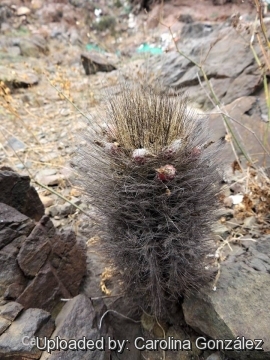 Mature specimen at Huasco in coastal Atacama desert of northern Chile. (Eriosyce villosa) Photo by: Carolina González
Mature specimen at Huasco in coastal Atacama desert of northern Chile. (Eriosyce villosa) Photo by: Carolina González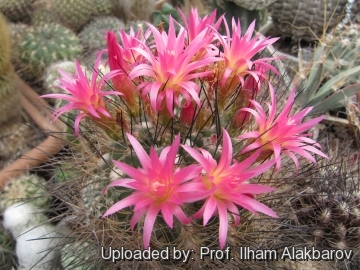 Bridgesia villosa (Eriosyce villosa) Photo by: Prof. Ilham Alakbarov
Bridgesia villosa (Eriosyce villosa) Photo by: Prof. Ilham Alakbarov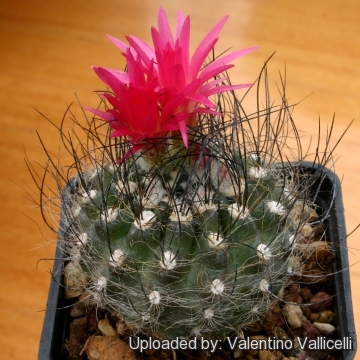 Bridgesia villosa (Eriosyce villosa) Photo by: Valentino Vallicelli
Bridgesia villosa (Eriosyce villosa) Photo by: Valentino Vallicelli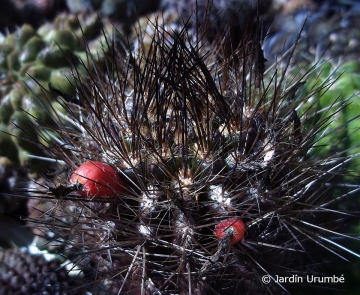 Bridgesia villosa (Eriosyce villosa) Photo by: Alexander Arzberger
Bridgesia villosa (Eriosyce villosa) Photo by: Alexander Arzberger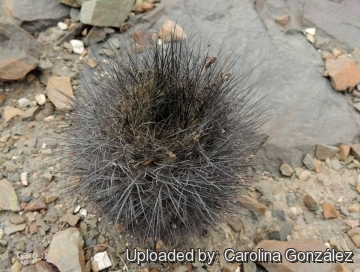 Habit at Huasco in coastal Atacama desert of northern Chile. (Eriosyce villosa) Photo by: Carolina González
Habit at Huasco in coastal Atacama desert of northern Chile. (Eriosyce villosa) Photo by: Carolina González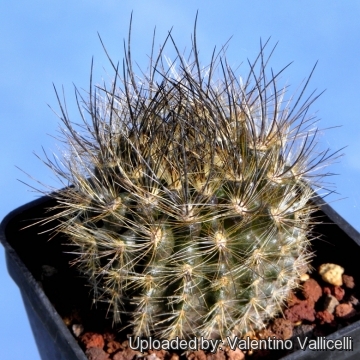 Bridgesia villosa (Eriosyce villosa) Photo by: Valentino Vallicelli
Bridgesia villosa (Eriosyce villosa) Photo by: Valentino Vallicelli Juvenile specimen at Huasco in coastal Atacama desert of northern Chile. (Eriosyce villosa) Photo by: Carolina González
Juvenile specimen at Huasco in coastal Atacama desert of northern Chile. (Eriosyce villosa) Photo by: Carolina González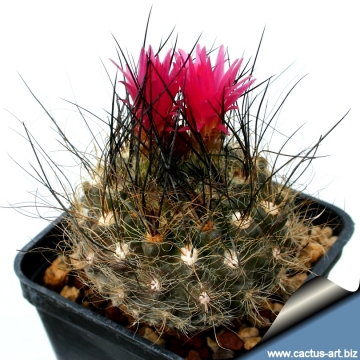 Bridgesia villosa (Eriosyce villosa) Photo by: Cactus Art
Bridgesia villosa (Eriosyce villosa) Photo by: Cactus ArtCultivation and Propagation: It is a summer grower species. Easy to cultivate but somewhat rot prone if kept in a non ventilated place. Requires a very fast draining drying soil Water regularly in summer, but do not overwater.
Needs a full sun exposure (or light shade) Good heat tolerance. Hardy to at down to -5°C for brief periods.
Propagation: Usually propagated from Seeds. (seldom produces offsets)
Your Photos

by Valentino Vallicelli
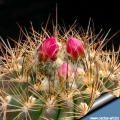
by Cactus Art
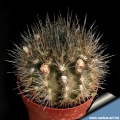
by Cactus Art
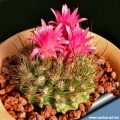
by Cactus Art
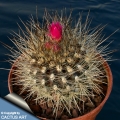
by Cactus Art























